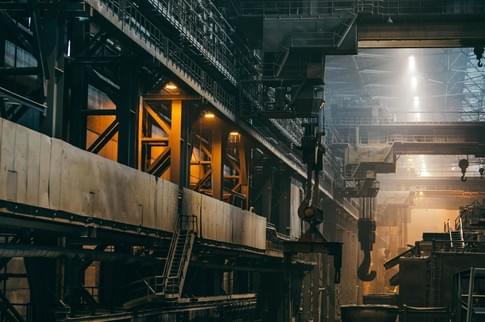Now, this up-and-coming entrepreneur recycles coconut waste to help prevent deadly landslides. Meet Alhaji Siraj Bah, founder of Rugsal Trading, who overcame tragedy and is using an alternative to wood for cooking fuel.





Find out more about it: http://ow.ly/keaI50Ix79G


A lush green wall and back-lit fibreglass panels are found on the exterior of an electrical substation extension that was designed by TEF Design to achieve net-zero energy consumption.
Owned by the utility company Pacific Gas and Electric, the Larkin Street Substation Expansion is located on a mid-block site in the city’s Tenderloin neighbourhood. It adjoins a concrete structure built in 1962 to supply power to the northeastern part of San Francisco.
For the constrained site, local firm TEF Design conceived a two-storey addition that totals 12,200 square feet (1,133 square metres). The extension rises 50 feet (15 metres) at its highest point.

GE is ready to rock the world of onshore wind turbines with 3D printing for a new concrete base.
Vast swaths of the US have yet to be tapped for wind energy, partly on account of politics and partly because wind speeds in those areas are less than optimal. Only the voting public can take care of the political end. Meanwhile, engineers and innovators are hammering away at the wind speed issue, which can be solved by building taller wind turbine towers. That’s not as easy as it sounds, but GE Renewable Energy is banking on 3D printing to overcome the obstacles.
Why Not Taller Wind Turbines?
Taller wind turbines have several advantages over their shorter cousins. They can reach heights where winds are stronger, without interference from trees, topography, or buildings. The greater height also allows for longer blades, which means a single turbine can harvest more energy. The cost efficiencies can also pile up for taller, longer wind turbines, at least on paper.

Oxford University researchers have developed a sensor made of sapphire fiber that can tolerate extreme temperatures, with the potential to enable significant improvements in efficiency and emission reduction in aerospace and power generation.
The work, published in the journal Optics Express, uses a sapphire optical fiber —a thread of industrially grown sapphire less than half a millimeter thick—which can withstand temperatures over 2000°C. When light is injected onto one end of the sapphire fiber, some is reflected back from a point along the fiber which has been modified to be sensitive to temperature (known as a Bragg grating). The wavelength (color) of this reflected light is a measure of the temperature at that point.
The research resolves a 20-year-old problem with existing sensors—while the sapphire fiber seems very thin, in comparison to the wavelength of light it is huge. This means that the light can take many different paths along the sapphire fiber, which results in many different wavelengths being reflected at once. The researchers overcame this problem by writing a channel along the length of the fiber, such that the light is contained within a tiny cross-section, one-hundredth of a millimeter in diameter. With this approach, they were able to make a sensor that predominantly reflects a single wavelength of light.

How China can boost its carbon neutrality efforts by ensuring renewables account for more than 50% of the power supply for aluminium production by 2045.
Decarbonizing the power supply for primary aluminium is critical for the sector to reach net zero. Electricity used during aluminium smelting – the process of extracting the metal from its ore – accounts for more than 60% of the industry’s carbon emissions.
It is particularly important to control the carbon emissions of China’s production of primary aluminium, which comes directly from mined ore rather than using recycled or alloy materials. Primary aluminium produced and consumed in China accounts for approximately 60% of the global market. Due to the high proportion of coal-fired energy used, 12.7 tonnes of carbon is emitted per tonne of aluminium produced in China, versus a global average of 10.3 tonnes, according to the latest figures, which cover the 2005 to 2019 period. This is why decarbonizing the power supply for Chinese primary aluminium production is critical.
